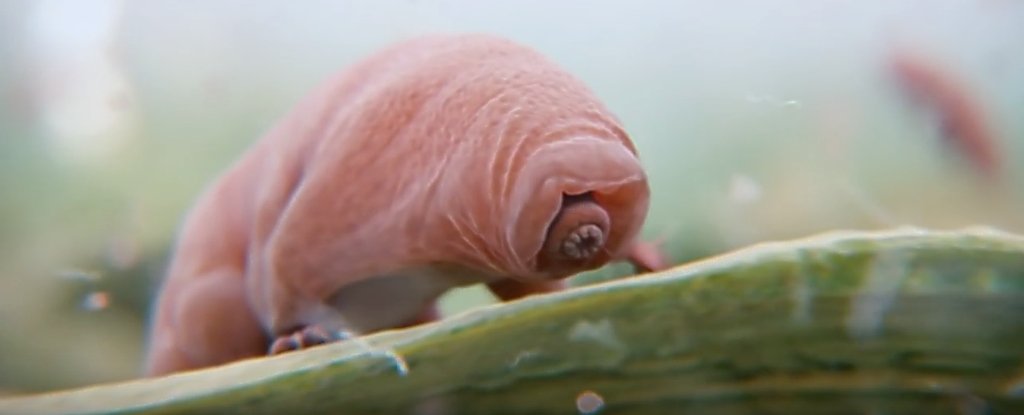GAM 2017 Blog
- Published: Thursday, April 27 2017 13:40
By Dr Caitlin Fisher
 The humble fruit fly (source: NASA - https://www.nasa.gov/mission_pages/station/research/news/AFEx)
The humble fruit fly (source: NASA - https://www.nasa.gov/mission_pages/station/research/news/AFEx)
When I was a child, I loved astronomy. I knew my planets (poor, poor Pluto), had glow-in-the-dark stars stuck on the bedroom ceiling and pretended I could see the Milky Way from our backyard. However I was shocked when I learned how fit an astronaut’s body had to be to withstand the high g-forces as the rocket ship took off into space as well as the harsh conditions on the spacecraft. I reluctantly rethought my career plans as an astronaut.
Luckily, I had a back-up plan - to collect lots of animals and have my own zoo.
While my career path has diverged from my childhood expectations (only a little), I had learned that my two favourite subjects could potentially be combined into one: animals in space! It turns out that animals had been sent to space more than a decade before the first cosmonaut Yuri Gagarin did in 1961. Remember those high g-forces that astronauts have to cope with? Human astronauts were not the first ones to do so - they sent non-human animals into outer space to see how well their bodies coped with the journey.
The first living things to leave the Earth’s atmosphere were fruit flies in 1947. Fruit flies are excellent test subjects for experiments because they share 77% of their genes with human beings! What that means is that, if you split half a strand of human DNA with half a piece of fruit fly DNA and compared them, 77% of the DNA would be the same! That is a lot to share in common with a tiny, flying insect - that might explain why bananas are so delicious! Fruit flies have continued to be frequent fliers into space. In May 2011, a live “Spider Cam” showed a fruit fly being captured by another space-dweller on the International Space Station, Esmerelda, a golden orb spider. In 2014, fruit flies were sent into space again to see whether zero gravity and other space conditions put stress on the fruit flies’ hearts and if they could stay healthy!
To stop fruit flies from stealing all the limelight, all sorts of other animals have been into outer space including mice, dogs, monkeys, rabbits, cats, guinea pigs, frogs, wasps, cockroaches, beetles, worms, newts and tortoises! But the weirdest creatures by far to have been flown up into space are the very mysterious tardigrades, or “water bears”. Only reaching a size of 0.5mm, these caterpillar-looking moss-eating animals can survive extreme temperatures, pressures, radiation, and dry conditions in all sorts of environments, and have even survived in the cold vacuum of space!
 A tardigrade (source: Science Alert - http://www.sciencealert.com/we-finally-have-footage-of-tardigrade-mating-and-it-s-even-weirder-than-expected)
A tardigrade (source: Science Alert - http://www.sciencealert.com/we-finally-have-footage-of-tardigrade-mating-and-it-s-even-weirder-than-expected)
So it seems that my ultimate goal of having a Space Zoo is not too far away after all! I can’t wait until they have the first bird in space to see how it would fly in zero gravity, or the first school of fish swimming between big droplets of water floating in the air! Or my favourite animal of all ... the hippopotamus!
If you found yourself wanting to know more about animal astronauts, fruit flies or tardigrades, here are some great places to start!
- “The History of Animals in Space” - a great pictorial summary of the variety of animals that have been sent into space
http://www.space.com/20648-animals-in-space-history-infographic.html - “NASA’s Next ‘Top Model,’ The Fruit Fly” - NASA explains why fruit flies are great subjects to study
https://www.nasa.gov/mission_pages/station/research/news/fruit_fly - “Buzzing With Activity: Fruit Flies Orbit Earth for Science” - NASA’s program to study heart stress in space
http://www.spaceflightinsider.com/missions/iss/fruit-flies-iss-show-spaceflights-effects-heart/ - “Scientists Finally Figured Out Why Tardigrades Are So Indestructible” - a great overview of how tardigrade bodies react to harsh environments
https://www.gizmodo.com.au/2016/09/scientists-finally-figured-out-why-tardigrades-are-so-indestructible/
 Caitlin is an astronomy enthusiast from Sydney, Australia and volunteer for Astronomers Without Borders. She obtained her PhD in Physics from the University of Sydney studying how light could be used to make faster and more energy-efficient computers. Her favourite hobby is to tell people fun science facts. Her second favourite hobby is eating chocolate and singing a cappella.
Caitlin is an astronomy enthusiast from Sydney, Australia and volunteer for Astronomers Without Borders. She obtained her PhD in Physics from the University of Sydney studying how light could be used to make faster and more energy-efficient computers. Her favourite hobby is to tell people fun science facts. Her second favourite hobby is eating chocolate and singing a cappella.








